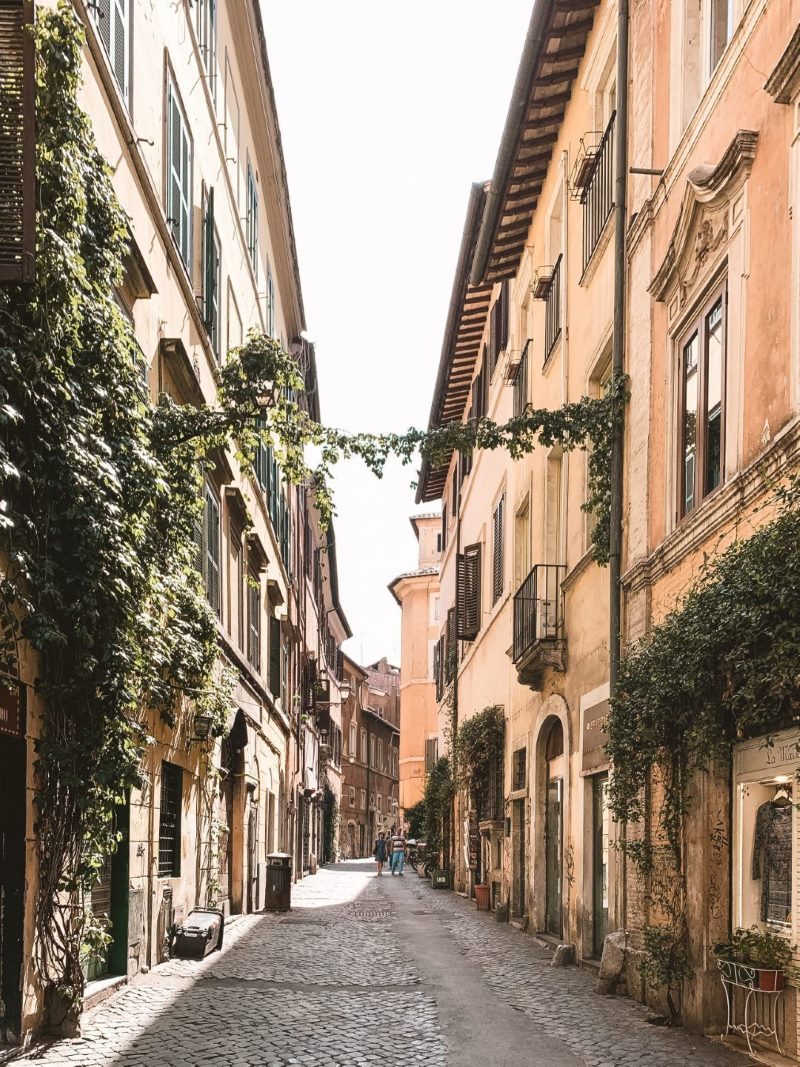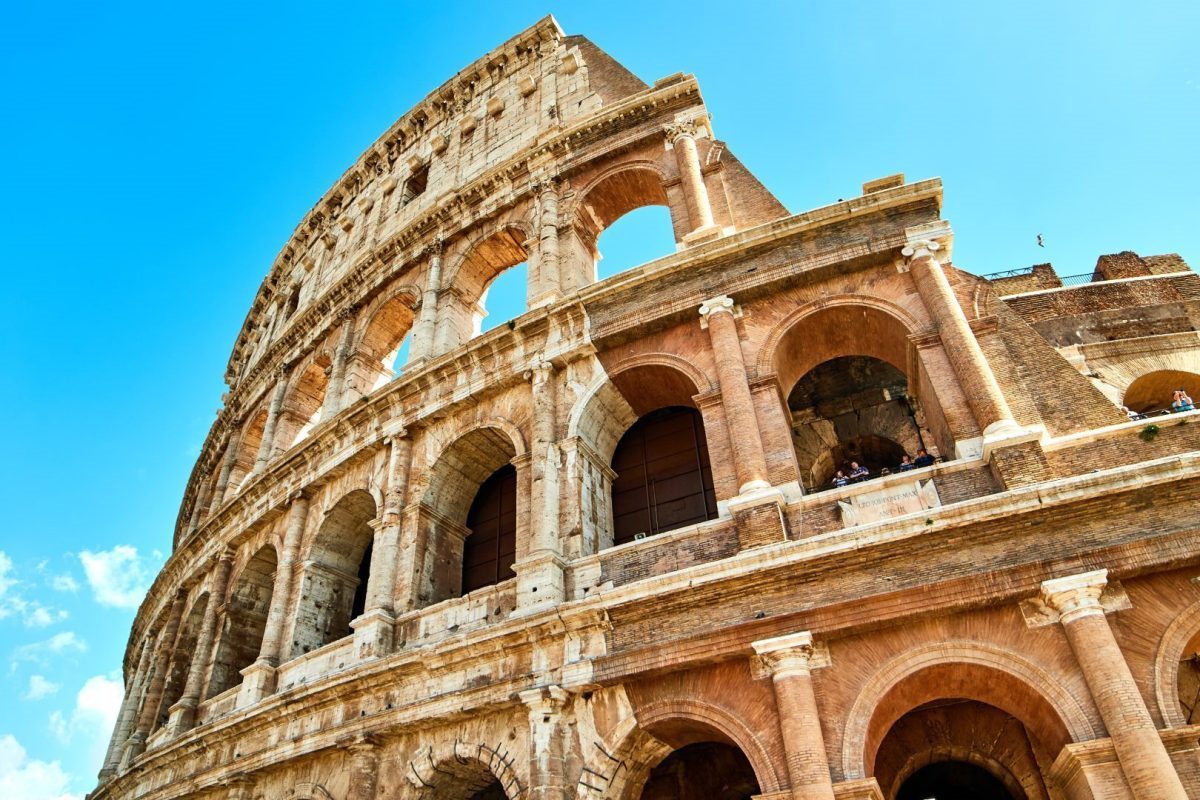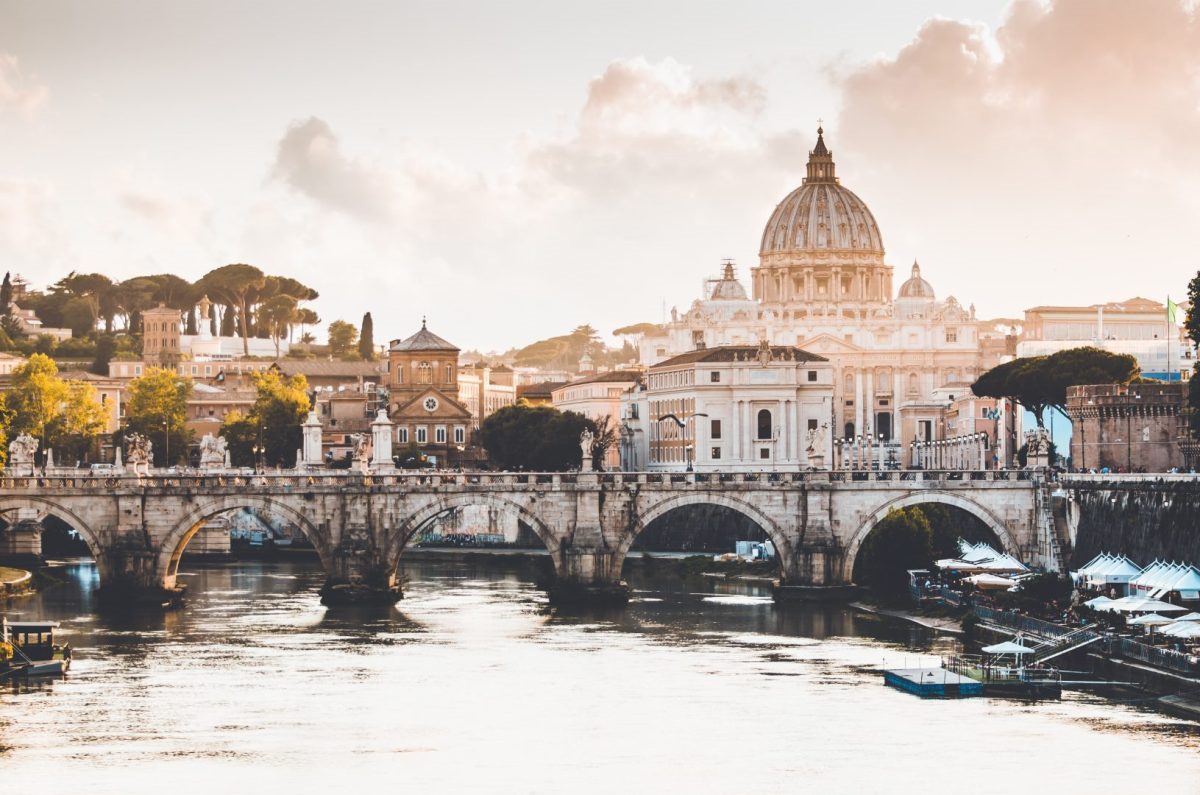How to Explore the Colosseum, Palatine Hill, and Roman Forum in Rome
When it comes to exploring the ancient history of Rome, the Colosseum, Palatine Hill, and Roman Forum are three must-see sites. These archaeological treasures provide a glimpse into the grandeur of the Roman Empire, with impressive ruins of temples, villas, and public spaces that have stood the test of time. However, interpreting the complex remains of these vast sites can be a challenge, especially if you don’t have a background in archaeology or history. That’s where a guided tour comes in handy, offering in-depth explanations and insights into the highlights of all three sites. In this guide, we’ll show you how to plan your tour of the Colosseum, Palatine Hill, and Roman Forum, with a focus on the Colosseum Tour with Palatine Hill and Foro Romano Tour offered by Viator.Overview of the Colosseum, Palatine Hill, and Roman Forum Tour
The Colosseum Tour with Palatine Hill and Foro Romano Tour is a two-hour guided tour that provides priority entrance to see the Colosseum, Roman Forum, and Palatine Hill. Your expert guide will help you explore Rome’s top ancient sites with a better understanding of the ruins, from the world’s largest ancient amphitheater to the spectacular temples and villas in the Roman Forum. During the tour, you’ll have the chance to stop and take photos of the ruins along the route, with free time to explore the Colosseum on your own after the tour. Admission tickets are included in the price, offering a hassle-free way to enter the sites without having to wait in line. The meeting point is at Casa dell’Acqua ACEA, Piazza del Colosseo 58, 00184 Roma RM Italy, in front of the entrance of the metro station, and the end point is at the Roman Forum, Via della Salara Vecchia 5/6, 00186 Roma RM Italy.What to Expect on the Tour
On the Colosseum Tour with Palatine Hill and Foro Romano Tour, you’ll get a chance to see the most impressive sites in the Colosseum, Roman Forum, and Palatine Hill in just two hours. Here are some of the highlights:Colosseum
The Colosseum, also known as the Flavian Amphitheatre, is the most famous monument in Rome and one of the world’s most iconic landmarks. Here, you’ll get a chance to learn about the history and architecture of the amphitheater, which was used for gladiatorial contests, public spectacles, and other events. You’ll also get a chance to explore the underground level, where the animals and performers were kept before the show.Roman Forum
The Roman Forum was the center of political and social life in ancient Rome, with numerous temples, basilicas, and public spaces that served as the backdrop for important events and ceremonies. On this tour, you’ll get a chance to see the most impressive ruins, including the Temple of Saturn, the Arch of Titus, and the House of the Vestal Virgins.Palatine Hill
Palatine Hill is the most ancient part of Rome, with impressive ruins of imperial villas and the Flavian Palace. Here, you’ll get a chance to see the Domus Augustana, the House of Livia, and the Farnese Gardens, with stunning views over the Roman Forum and the Circus Maximus. In addition to these highlights, your guide will also provide you with insights into the daily lives and customs of ancient Romans, explaining the role of religion, politics, and entertainment in shaping the city’s identity.Booking the Tour
To book the Colosseum Tour with Palatine Hill and Foro Romano Tour, simply visit the Viator website and select your preferred date and time. The tour is available in several languages, including English, Italian, French, German, and Spanish, with a maximum group size of 25 people. With admission tickets included in the price, this tour offers a hassle-free way to explore some of Rome’s most impressive ancient sites.Book Your Tour Now
Exploring the Colosseum, Palatine Hill, and Roman Forum is an unforgettable experience that provides a glimpse into the grandeur of the Roman Empire. With a guided tour, you can learn about the history and architecture of these impressive sites and get a deeper understanding of the customs and traditions of ancient Romans. The Colosseum Tour with Palatine Hill and Foro Romano Tour is an excellent choice for those who want to see the highlights of all three sites in just a few hours, with admission tickets and expert guidance included in the price. Book the tour here and get ready to travel back in time to ancient Rome!
Frequently Asked Questions About Rome, Italy
If you’re planning a trip to Rome, Italy, it’s natural to have questions about the city, its culture, its people, and its must-see attractions. Here are some of the frequently asked questions about Rome that can help you plan your trip better:1. What Is the Best Time to Visit Rome?
The best time to visit Rome is usually between April and June or between September and November. During these months, the temperature is mild, and the crowd is slightly lesser than the peak season (July and August). However, you can still visit Rome in July and August. The weather is hot, and the crowd is enormous, but you can expect more outdoor events during summer.2. Do I Need a Visa to Visit Rome?
This question depends on where you come from. Citizens of the European Union, the United States, and many other countries can enter Italy without a visa and stay up to 90 days. However, you need to have a valid passport that is not expired.3. What Are the Must-See Attractions in Rome?
Rome is home to many iconic landmarks and historical sites. Below are some of the top places that you should visit when you’re in Rome:• The Colosseum
The Colosseum, also known as the Flavian Amphitheatre, is the largest and most famous ancient amphitheater in the world. It is situated in the center of Rome and was used for gladiatorial contests and public spectacles such as mock sea battles, animal hunts, and public executions.• The Vatican Museums and St. Peter’s Basilica
The Vatican Museums and St. Peter’s Basilica are perhaps the most popular tourist sites in Rome. The museums feature an extensive collection of priceless artifacts and art, including ancient Egyptian mummies, Renaissance masterpieces, and even a giant bronze pinecone sculpture. St. Peter’s Basilica, located within Vatican City, is the largest church in the world and a center of Christianity.• The Pantheon
The Pantheon is one of the best-preserved ancient structures in Rome. This former temple, now a Catholic church, was built around 125 AD and has a fascinating architectural design, including a massive dome with a circular opening at the top.• The Roman Forum
The Roman Forum was once the political, economic, and social center of the Roman Empire. Today, tourists can visit the Forum and walk through its ruins, including the remains of ancient temples, government buildings, and public spaces.• The Trevi Fountain
The Trevi Fountain is the most famous fountain in Rome, set at the intersection of three streets. It is said that if you throw a coin over your shoulder into the fountain, you’ll guarantee a return trip to Rome.4. What Is the Currency Used in Rome, Italy?
The official currency in Italy is the Euro (EUR). You can exchange your currency at banks, exchange offices, or ATMs. Credit cards are also widely accepted in Rome.5. What Is the Language Spoken in Rome?
The official language in Italy is Italian. However, many people in Rome, especially those who work in the tourism industry, speak English.6. What Is Rome’s Public Transportation System Like?
Rome has a metro, buses, and trams that are well-connected and easy to use. You can buy a daily pass or single tickets from kiosks or machines at metro stations, tobacconists, or newsstands. Taxis are also available, but they can be more expensive than public transportation.7. Where Can I Find Affordable Accommodation in Rome?
Rome has a wide variety of accommodation options for all budgets, including luxury hotels, bed and breakfasts, and hostels. If you’re looking for affordable options, you can find a lot of excellent hostels and budget-friendly hotels near the city center.8. What Are the Top Foods to Try in Rome?
Rome is a food lover’s paradise, and you should try the following local dishes:• Carbonara
A classic Roman pasta dish made with eggs, pecorino cheese, guanciale (pork cheek), and black pepper.• Trastevere-style pizza
Pizza from the Trastevere neighborhood, known for its extra-thick, crispy crust topped with prosciutto, mozzarella, and tomatoes.• Saltimbocca alla Romana
Thin slices of veal topped with prosciutto and sage, cooked in white wine and butter sauce.• Gelato
Italian ice cream made with fresh milk, cream, and fruit flavors.Book Your Tour Now
Rome is not only about history and art, but also about food and culture. It’s a city that you can visit any time of the year, and you’ll always find something new and exciting to see or experience. This FAQ has provided you with essential information about visiting Rome, but there is no substitute for experiencing the city for yourself. Enjoy your trip to Rome!
How to Spend Your Time as a Tourist in Rome: A Comprehensive Guide
Rome, the ‘Eternal City’ known for its rich history, glorious charm, and art treasures that take you back in time is undoubtedly one of the most beautiful cities in the world. With its impressive ruins, lively piazzas, and mouth-watering local cuisine, it is no wonder Rome attracts millions of tourists every year. If you are planning a trip to Rome, this guide will help you make the most of your time in this historically and culturally significant city.1. Visit the Colosseum and Ancient Rome
No trip to Rome is complete without a visit to the Colosseum, one of the iconic symbols of Rome. The Colosseum is the largest amphitheater ever built and was used for gladiatorial contests and public spectacles. Apart from the Colosseum, the ancient Roman Forum, the Palatine Hill and the Pantheon are other historical landmarks worth visiting in Rome. Explore the ruins, try to imagine the ancient Romans walking around the marketplaces, and you might feel like you have gone back in time.2. Explore the Vatican City
No visit to Rome is complete without exploring the world’s smallest independent state, the Vatican City. It is home to some of the world’s most famous art pieces and stunning monuments, including St. Peter’s Basilica and the Sistine Chapel, adorned with iconic frescoes by Michelangelo. You can also visit the Vatican museums, which contain artifacts collected by popes throughout history.3. Enjoy Local Cuisine
One of the richest experiences in Rome is the food. Local cuisine is simple, fresh, and delicious. Be sure to try out classic Roman dishes like carbonara, cacio e pepe, and amatriciana, alongside local wines like Chianti and Frascati. And do not forget the pizza, of course! Purgatorio, Pizzarium, and Pizza al Taglio are some of the best places to get pizza in the city.4. Take a Walk Around the City
Rome is a city made for walking with its lively streets, hidden alleys, cozy cafes, and magnificent piazzas. You can start with the famous Piazza Navona, where street artists perform and the historic Trevi Fountain, as immortalized in movies like ‘Three Coins in the Fountain’. Keep walking towards the Spanish Steps, where you can enjoy the panoramic view of the city.5. Admire the Art and Architecture
Rome is full of art and architecture, much of which has survived for thousands of years. In addition to the Spanish Steps and the Trevi Fountain, there are many Baroque churches and palaces, such as the Borghese Gallery with Caravaggio’s artwork or Palazzo Farnese and Palazzo Colonna, each representing different eras of Italian history.6. Visit the Beautiful Parks in Rome
Rome is not just a city full of art, architecture, and history, but also has plenty of outdoor green spaces. The Borghese Park, located in the heart of the city, features vast gardens, monuments and sculptures, as well as the world-famous Borghese Gallery. The Appia Antica Park, the oldest and largest park in Rome, is another must-visit destination, offering a peaceful and serene atmosphere with incredible ancient ruins.7. Shop at Local Markets
Rome is known for its local markets. The Campo de’ Fiori market is the most popular among tourists and locals alike, with vendors selling a variety of fresh produce, seafood, and flowers. Another great market is the Trastevere Flea Market, selling vintage clothing and antique furniture. Visiting these markets is not only an excellent opportunity to buy unique souvenirs but to also interact with the locals and experience a different side of the city.8. Take a Day Trip
There are plenty of day-trip options available from Rome. You can take a trip to Tivoli and visit the UNESCO World Heritage Site Hadrian’s Villa, or explore the awe-inspiring ruins of Pompeii near Naples. Another popular option is visiting the picturesque hilltop towns of Tuscia that are still active in local crafts production, such as Civita di Bagnoregio or Tarquinia.Book Your Tour Now
Rome is a city that has something for everyone, and no matter how many days you spend here, there is always something left unseen or undiscovered. With a mix of history, culture, and excellent food, Rome is undoubtedly a top destination for travelers seeking an authentic Italian experience. Use this guide to make the most of your time in Rome, and you will leave with unforgettable memories.Table of Contents

